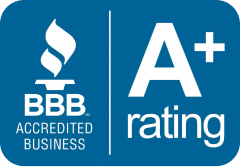
The most important takeaways (questions on Medicare)
Questions on Medicare
- The procedure of acquiring Medicare is very different from purchasing health insurance via your work. Medicare provides coverage for a variety of services.
- Because all Medicare coverage is individual policies, you and your spouse must make separate purchase selections if you are married.
- Your health state, cost, coverage, prescription medication usage, and access to existing or preferred doctors and hospitals should all be factored in your Medicare selection.
Here are answers to some of the most frequently asked Medicare questions to help you feel confident about enrolling in Medicare. Also, keep in mind that the federal government has just changed Medicare coverage for COVID–19: For further information, visit Medicare.gov
Find Medicare Plans in 3 Easy Steps
We can help find the right Medicare plans for you today
1. What is Medicare?
The Centers for Medicare and Medicaid Services are the official federal organizations responsible for Medicare. They describe Medicare as a federal health insurance program for:
- People above the age of 65
- Some disabled children and teenagers
- People with End-Stage Renal Disease (ESRD), which is permanent kidney failure that needs dialysis or a kidney transplant
Getting started with a few Medicare basics
Medicare exclusively covers individuals, which may come as a surprise. Unlike health insurance policies purchased before the age of 65, Medicare does not offer a family coverage plan. That means your spouse or partner will not be covered under your Medicare plan and will have to join up for Medicare on their own when they become eligible.
You have seven months to sign up for Medicare and enroll. For those who are eligible when they turn 65, the 7-month period begins three months before the month they turn 65 and ends three months after they turn 65. You can enroll for the first time during this period.
Medicare offers a Special Enrollment Period to anyone over 65 who is currently working and/or has health insurance through their employer or spouse’s job. This time can also be used if specific life events occur, such as moving or losing other insurance coverage.
You may have a large gap in your health care coverage if you miss the Initial Enrollment Period and do not qualify for the Special Enrollment Period. You’d have to wait until the General Enrollment Period resumes in January the following year. (It’ll be over in March.)
However, consider the following consequences of bypassing the Initial Enrollment Period: If you enroll between January and March, your coverage will not begin until July of the following year, and you will be assessed a late enrollment penalty, which will be added to your monthly premium (what you pay each month for health care coverage).
2. What are my options?
Part A: Hospital insurance
Part A of Medicare was initially developed in 1965 to assist seniors in managing the high expense of hospitalization. Hospitalizations, some hospital treatments and procedures, skilled nursing facility care, and hospice care are all covered in Part A.
Part B: Medical insurance
Part B of Medicare pays for doctor visits and services, outpatient hospital care, physical and speech therapy, lab testing, blood transfusions, medical equipment and supplies, and ambulance services, among other things.
Original Medicare refers to both Part A and Part B taken together
Medigap (Medicare Supplement)
A Medigap policy is a type of private health insurance that is used to complement Medicare. This implies it helps pay for part of the healthcare expenditures not covered by Original Medicare (such as copayments, coinsurance, and deductibles). These are Medicare coverage “gaps.”If you have Original Medicare plus a Medigap policy, Medicare will pay its share of the Medicare-approved amounts for covered health care costs. Then your Medigap insurance kicks in.
Parts A and B are provided by the federal government, whereas Medigap policies are provided by commercial health insurance firms. There are many Medigap plans to select from, all of which cover treatments not covered by Parts A and B.
Tip: You may find out which insurance firms in your region sell Medigap coverage by visiting Medigap Policy Search
Part D: Prescription drug coverage
Original Medicare and Medigap plans do not cover prescription drugs, so you’ll need to buy a Part D plan or a Medicare Advantage plan that does. It is not necessary to enroll in a Part D plan. However, if you don’t sign up for a Part D plan when you first become eligible, you may face financial penalties if you do so later.
It’s crucial to think about which prescription drug plans cover the prescriptions you need, how often you need them, and where you buy them, regardless of which plan you pick.
Medicare Advantage

This plan is an alternative to Medicare Parts A and B, as well as Medigap. Medicare Advantage (also known as Medicare Part C) is a “one-stop-shop” managed care plan that includes Original Medicare and Medigap coverage, as well as Part D prescription drug coverage, vision treatment, and dental care.
Isn’t it fantastic? There is, however, a snag. The term “in-network services” refers to treatments that are covered under Medicare Advantage plans. Each Medicare Advantage plan has a network of doctors and healthcare institutions with whom it collaborates. The majority of Medicare Advantage plans require beneficiaries to use their network for services, however, there are exceptions: PPOs, on the other hand, have a network but enable you to go out-of-network with increased cost-sharing, whereas HMOs solely give in-network care.
Tip: Consider which physicians you visit, what your current medical needs are (such as prescription drugs), and if the doctors you currently see are in-network for the Medicare plan you’re considering when choosing a Medicare Advantage plan. Would you mind switching physicians if they aren’t in-network?
3. How do I sign up?
You may already have a plan in mind for Medicare coverage. But how do you go about formalizing it?
Parts A and B
- Apply for Social Security benefits online. You can return to Social Security to finish your application if you began it online and have your re-entry number.
- Pay a visit to the Social Security office in your area.
- Call the Social Security Administration at 800-772-1213. (TTY: 800-325-0778).
Medicare Advantage
When it comes to enrolling in a Medicare Advantage plan, you have a few alternatives. You can enroll during the following times:
- Parts A and B have the same enrollment period (3 months before the month you turn 65 to 3 months after the month you turn 65).
- The annual Medicare Advantage Open Enrollment Period begins on October 15 and finishes on December 7. During this period, you can also change or drop your Medicare Advantage plan. You must be enrolled in both Parts A and B of Medicare to enroll in a Medicare Advantage plan.
- The Special Enrollment Period is determined by your unique circumstances.
- gives more information about this time period.
Whether you enroll through a health insurance provider, an agent, or a health insurance marketplace website, the method of enrollment (online form, paper application, over the phone) varies.
Medigap
If you are 65 or older, you have a so-called guaranteed problem if you lose or discontinue some types of health coverage within 63 days. Companies are required to sell you Medigap coverage at the best available rate at this stage, regardless of your health status. They are unable to refuse you coverage. When you initially become eligible for Medicare or during the Medicare Open Enrollment Period, you can purchase a Medigap plan through a health insurance company, an agent, or a health insurance marketplace. Some insurance carriers may enable you to buy a Medigap plan at various points throughout the year.
Part D
Depending on your coverage requirements, you can consider enrolling in a prescription drug plan during the Initial 7-month Enrollment Period, which begins three months before the month you turn 65. If a person enrolled in a Medicare drug plan goes without Part D or other creditable prescription drug coverage for a continuous period of 63 days or more after the end of their Initial Enrollment Period for Part D coverage, they may be subject to a late enrollment penalty. You can switch prescription medication plans at any time during the yearly Open Enrollment Period, which runs from October 15 to December 7.

4. What do the plans cost?
Keep in mind that because all Medicare coverage is individual policies, you and your spouse will make independent purchase selections.
Part A
Part A coverage is free if you or your spouse or partner paid Medicare taxes for at least 40 quarters (about 10 years). However, you will be responsible for a deductible every benefit period ($1,556 in 2022) as well as a daily coinsurance for lengthy hospital stays.
To qualify, you must have enough Medicare-eligible earned income each quarter. A quarter with only $100 in earned revenue, for example, would not qualify.
Individuals who do not qualify for free Part A coverage because they did not pay Medicare taxes for a sufficient amount of time can purchase it (in 2022, $499 monthly if you paid Medicare taxes for fewer than 30 quarters; $274 monthly if you paid Medicare taxes for 30–39 quarters).
Part B
For the most part, Medicare sets the cost (premium) for Part B at a constant amount each year ($170.10 per month in 2022), although it rises for people with yearly incomes above $91,000 and married couples with annual incomes over $182,000 each year. In 2022, the monthly cost for these higher-earning members might vary from $238.10 to $578.30. Part B premiums
If you don’t enroll when you’re initially eligible, your costs may be greater, unless one of the exclusions listed above applies. A ten percent penalty cost is imposed on your premium for each year you fail to enroll on time—for the rest of your life.
Part B, like Part A, will have an annual deductible ($233 in 2022). Furthermore, certain eligible services require you to pay a portion of the expenses or a Medicare-approved copayment amount (which is 20 percent of costs for many items or services).
Payment for your monthly Part B premium is withdrawn from your Social Security checks if you are currently receiving benefits. If you haven’t started receiving benefits yet, you’ll get a quarterly bill from Social Security.
Medicare Advantage
Source: www.Medicare.gov. What Part A & Part B don’t cover
When you enroll in a Medicare Advantage plan, you continue to pay Part B payments and, if you have less than 40 quarters, Part A premiums. Regardless of age, gender, or health status, everyone who enrolls in the same Medicare Advantage plan pays the same price.
Tip: You can compare Medicare Advantage plans in your area with Medicare.gov’s Plan Finder.
Part D
The amount that insurance companies charge for prescription drug coverage differs. The variation is based on how health insurance companies set up their deductibles and copayments, and the brand name and generic drugs (drug formulary) they cover.
Individuals and couples with higher incomes will pay higher monthly charges for Part D coverage. Premiums (PDF)
Depending on the modified adjusted gross income (MAGI) and marital status, the amount varies.
In 2022, the highest deductible for stand-alone Part D prescription drug plans will be $480. The out-of-pocket maximum for these plans is $7,050. Part D plans will no longer have a coverage gap (or donut hole) for brand-name or generic medications after 2020. You pay 25% of the cost of brand-name or generic medicine until you reach the out-of-pocket level once you’ve met your Part D plan deductible.
Tip: Compare Part D costs at Compare plans
or your local State Health Insurance and Assistance Programs (SHIP) office.
Medigap
While the benefits of a Medigap plan are the same across the country, the costs of this insurance vary. If you want to get a Medigap policy, make sure you compare pricing beforehand. There are three methods for determining the cost of Medigap insurance: (1) Community rated (everyone in the same Medigap plan pays the same premium); (2) Issue-age rated (based on your age at the time of application); and (3) Attained-age rated (based on your age at the time of application) (based on your current age and continues to increase as you get older). In the end, the pricing strategy of the insurance provider, as well as your geographic location, gender, and smoking status, influence your premium.
5. Which plan is right for me?

It’s usually a good idea to start by looking at the coverage you now have with your current health care carrier when determining which Medicare plan is best for you. What would you preserve and what would you change?
Ask yourself the following questions to help you narrow down your options:
- How much money can I spare to pay for my insurance (premiums) and my medical treatment (deductibles, copayments, and coinsurance)?
- What advantages do I require? (If you don’t get coverage for benefits you don’t mind paying for out of cash, you could save money.)
- Do I want to be able to pick and choose my doctors and healthcare providers?
- Is there coverage for my specific scenario in the plan? (If you plan to travel, paying for emergencies outside your state or nation may be necessary.)
- How does the cost of each plan compare to the cost of other plans with comparable features
and your local SHIP office can assist you in comparing Medigap and Medicare Advantage plan features and pricing in your state.
6. Where can I go for more help?
You’re sure to have additional inquiries now that you know the answers to some typical Medicare queries. There are several wonderful sources of knowledge that might help you find answers:
- The official Medicare site, Medicare.gov
- , offers several helpful guides and interactive tools to help you compare your options.
- The Social Security site can provide guidance Opens in a new window
- for Original Medicare.
- For free one-on-one assistance from a SHIP program counselor, go to your local SHIP office. SHIP offices also provide you with extra services, seminars, and publications.
Plan ahead
Having the right Medicare coverage is a vital part of your retirement strategy, along with your overall health and wellness. Health status, cost, coverage, prescription medicine use, scheduled travel, and access to existing or preferred physicians and hospitals are just a few of the many factors to consider while selecting Medicare. To learn more about your options, speak with a Fidelity financial advisor or use the tools listed in this article.
Find Medicare Plans in 3 Easy Steps
We can help find the right Medicare plans for you today
FAQs
Do you have any concerns regarding your Medicare benefits? 1-800-MEDICARE (1-800-633-4227) can provide assistance. For TTY users, dial 1-877-486-2048.
What are the 4 types of Medicare?
Medicare is divided into four parts: Part A, Part B, Part C, and Part D.
Part A covers inpatient and hospital stays.
Outpatient/medical coverage is provided through Part B.
Part C provides an alternative method of receiving Medicare benefits (see below for more information).
Prescription drug coverage is provided via Part D.
What are the 3 requirements for Medicare?
Medicare is generally provided to persons 65 and over, as well as younger people with impairments and those with End-Stage Renal Disease (permanent kidney failure requiring dialysis or transplant). Part A (Hospital Insurance) and Part B (Medicare Supplement Insurance) are the two portions of Medicare (Medicare Insurance).
What questions are asked when you apply for Medicare?
Consider your options with this advice as you prepare to enroll in Medicare or after you have already enrolled.
- What are the fundamentals?
- What coverage alternatives do you have?
- Should you sign up for Part D?
- Are you qualified for any Medicare cost-cutting programs?
- What resources are available to assist you in navigating Medicare?
Does Medicare cover dental?
The vast majority of dental services are not covered by Medicare (including procedures and supplies like cleanings, fillings, tooth extractions, dentures, dental plates, or other dental devices). Inpatient hospital stays, skilled nursing facility care, hospice care, and some home health care are covered in Part A.
What is Medicare Part C called?
What medical expenses are not covered by Medicare?
Long-Term Care is one of the commodities and services that Medicare does not cover.
- The majority of dental care.
- Exams for the purpose of prescribing spectacles.
- Dentures.
- Cosmetic surgery is a type of surgery that is used to improve
Acupuncture. - Hearing aids and the examinations required to fit them.
- Foot care on a regular basis.
Does Medicare pay for everything?
Many medical and hospital services are covered by Original Medicare (Parts A and B). It does not, however, cover everything.
What is the difference between managed Medicare and Medicare?
Managed care programs for Medicare beneficiaries are an optional coverage option. Managed-care plans are designed to supplement or replace your initial Medicare coverage. Part A (hospital insurance) and Part B (medical insurance) make up the original Medicare (medical insurance). Private companies that are regulated by Medicare sell plans.
In 2022, people who purchase Part A will pay a monthly premium of $274 or $499, depending on how long they or their spouse worked and paid Medicare taxes. You can still buy Part B if you don’t want to buy Part A.







